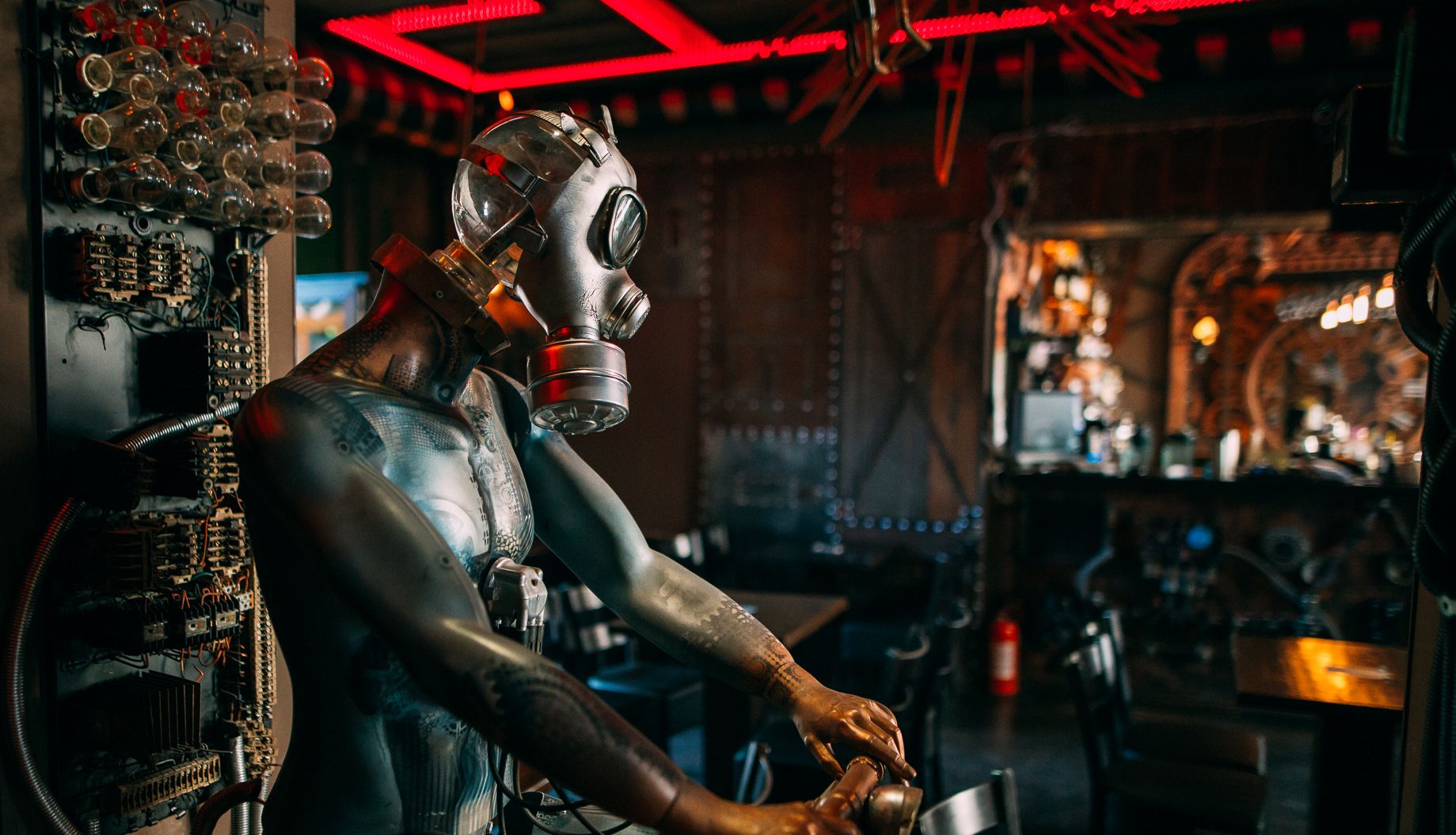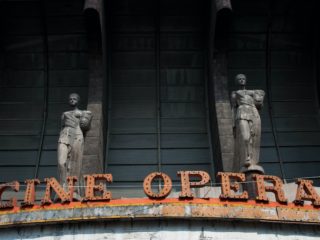Rumour has it that Cluj-Napoca now boasts some of the best cafés in Romania, whether we talk about specialty coffee, cool interior design or just a cozy place to have brunch on a Saturday. We can definitely vouch for several such places, but there’s something else that caught on in the past few years—the steampunk-themed cafés and bistros.
What is steampunk?—you might ask, and rightfully so. Coined by the American author K.W. Jeter in 1987, the term steampunk denotes a cultural-artistic movement that combines the Victorian aesthetic with the steam-technology of the 19th century, depicted in science fiction or fantasy books. Or rather imagine the novels of H.G. Wells and Jules Verne, and there you have it. In recent history, the steampunk idea was assimilated by many other forms of art, such as cinema, comics, video games or home decor, turning it into a trend.
Inspired by the concept, Alexandru Tohotan and Zoltan Zelenyak, the designers behind 6th Sense studio in Cluj-Napoca, created some of the most sensational places in Romania.
Everything started in 2014, with Joben Bistro (29, Avram Iancu Street). When Alexandru and Zoltan first saw the place, they decided to go for industrial design, but then, inspired by all the junk left behind during the process, they realised a steampunk theme would suit the three-room pub better, with touches of industrial and modern design. They toyed with textures, objects and ambient light, which plays an important role in the whole concept of the design. The finished result is that once you step inside the pub, you feel like you’ve travelled back in time—with an imaginary time machine, obviously, to complement the steampunk concept. The quirky mix of a zeppelin, exposed copper pipes, dozens of gears and odd little objects, old black and white photos and top hat lampshades (joben is the Romanian for top hat) give the place an edgy, retro-futuristic vibe.
View this post on Instagram
The place soon got noticed, did the internet rounds, and was featured among the world’s best restaurant and bar interior designs, so the duo’s next project—for the same client—simply had to follow suit. For Submarine Pub (2, Unirii Square) the two designers were inspired by the place’s unusual configuration: the vault-shaped ceiling and the wagon-like interior, divided in two areas, each with its own bar. In order for the venue to resemble a submarine—a direct allusion to Jules Verne and his famous Nautilus—they used all sorts of gears: periscopes, copper pipes or bolted metal doors. The walls sport pressure gauges, maps, and sepia-toned photos depicting real-life submarine experience. But probably the most attractive details are the two torpedoes mounted on the ceiling, that travel up and down the length of the bar. Or the bar itself, with its control panels, charts and radars. Speaking of the bar, in true marine fashion, they offer no less than 80 types of rum, from all over the world.
View this post on Instagram
With Enigma Cafe (12, Iuliu Maniu Street), the designers took the design challenge even a step further, the place being the first kinetic steampunk café in Romania. The kinetic art explores the aesthetic of things in movement. Its roots are to be found in the 19th century, with Impressionists like Degas and Monet, who tried to express human movement in their paintings. But it was actually in the first half of the 20th century, with experimental artists such as Alexander Calder, Naum Gabo or Marcel Duchamp, when the kinetic sculpture was eventually cemented as a form of art in itself.
The design for Enigma Cafe aspires to question the concept of time as we know it. There are seven kinetic sculptures in total, carried out with the help of several engineers, and each of them is a reference to time, which is more than just chronology. The central piece is a giant, moving clock that gives one the feeling of being inside it. It is made of round, transparent glass with small, intricate copper mechanisms that work in sync, and it spreads on the whole wall. The time machine in the shape of an elevator is another reference to time—the passing of it, the desire to escape it— while the pedalling humanoid robot—a slave of time—is meant to represent the humans striving to find their path in life.
View this post on Instagram
Q Caffe (13, Petru Maior Street) is the most recent and probably the most ambitious project in terms of creativity. Completely different from the idea of a cozy café, the decor is telling a story and it’s not just any story, but—within the limitations imposed by 3 rooms—the story of humanity. Combining elements of steampunk and dark fantasy, the interior design—a fruitful collaboration between 6th sense and a bunch of other talented artists—illustrates the social man’s path through life, the complexities and constraints that challenge the limits of reality. Both the real and the imaginary are represented through various suggestive and metaphorical elements, like, for instance, the statue of Icarus—a symbol for aspiration towards freedom, the human chain sculpture which epitomises the loss of individuality or a hot air ballon, meant as a metaphor for the transcendental journey towards liberation.
View this post on Instagram
While in Cluj, you might also want to:
- visit Fabrica de Pensule / The Paintbrush Factory, for a fresh perspective on Romanian contemporary art scene;
- climb up on Cetățuie / Cetatuia Hill, for a panoramic view of the city;
- take a trip to Turda Salt Mine, 30 km from Cluj-Napoca, for a unique experience in one of the best preserved salt mines in Romania.
Featured image and video: courtesy of Enigma Cafe.











